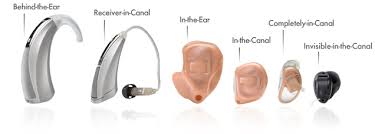 The most common misperception about hearing aids is that they provide normal hearing to wearer- but this is NOT SO….
The most common misperception about hearing aids is that they provide normal hearing to wearer- but this is NOT SO….
Hearing aid is a device designed to improve hearing by making sound audible to a person with hearing loss. Hearing aid technology is constantly evolving and becoming increasingly advanced. Modern hearing aids are small high-tech computers, which are constantly being refined and developed to provide a better reproduction of natural human hearing. This progress allows for increasing numbers of sophisticated features to be built into the hearing aids and provide improved sound reproduction. The ability to adapt the hearing aids to individual demands with respect to your daily environment and type of hearing loss is constantly improving.
Among the various hearing needs concerns, we know one of the age-old concerns is to be able to hear and understand speech in noisy situations such as at meetings, crowded restaurants. Today’s hearing aids possess more powerful noise reduction ability and enable more precise frequency increments’ adjustment so as to enhance speech clarity to help you hear better.
A complete range of hearing aids, coming in different styles with varying degrees of power ensures that every individual can find the most suitable hearing aid to address their hearing need. In general, the higher the extent of hearing loss, the larger and more powerful the hearing aid required.
Behind-the-ear hearing aids (BTE aids): BTE hearing aids consist of a case which hangs behind the pinna. The case is attached to an earmold or dome tip by a traditional tube, slim tube, or wire. TEs are generally capable of providing more output and may therefore be indicated for more severe degrees of hearing loss. However, BTEs are very versatile and can be used for nearly any kind of hearing loss. BTEs come in a variety of sizes, ranging from a small, "mini BTE," to larger, ultra-power devices. Size typically depends on the output level needed, the location of the receiver, and the presence or absence of a telecoil.
In-the-ear hearing aids: In the ear aids (ITE) devices fit in the outer ear space (called the concha). Being larger, these are easier to insert and can hold extra features.They are sometimes visible when standing face to face with someone. ITE hearing aids are custom made to fit each individual's ear. They can be used in mild to some severe hearing losses.
In-the-canal hearing aids: ITC aids are generally not visible unless the viewer looks directly into the wearer's ear. These aids are intended for mild to moderately severe losses. Completely-in-the-canal(CIC) hearing aids fit tightly deep in the ear and is barely visible.
Invisible-in-the-canal(IICs): Invisible in canal hearing aids (IIC) style of hearing aids fits inside the ear canal completely, leaving little to no trace of an installed hearing aid visible. This is because it fits deeper in the canal than other types, so that it is out of view even when looking directly into the ear bowl (concha). A comfortable fit is achieved because the shell of the aid is custom-made to the individual ear canal after taking a mould.
Contra Lateral Routing of Signal (CROS) hearing aids For individuals with one good hearing ear and one profoundly impaired ear, picking up sound from the poor ear can be difficult. This group of patients with single-sided hearing loss will always face difficulty with the speakers are not position on the side of the good ear. CROS hearing aids are designed for these patients. CROS aid consists of two parts:
1. The CROS aid has a microphone that picks up sounds and voices from the non-hearing ear and wirelessly transmits them to the hearing aid on the other ear.
2. The hearing aid receives signals from the non-hearing ear and plays it to the good ear.
Our team of experienced and qualified audiologists first undertakes diagnostic hearing evaluation then hearing conservation strategies are discussed & subsequently if required Hearing aid trial/fitting is suggested. As per requirement, we dispense a wide variety of hearing aids including the most advanced technology currently available.
You will first need to have your ear & hearing examination done. Additional testing in the sound proof room may be done in the clinic. The hearing test will provide a starting point for determining hearing aid candidacy.
Hearing Aid Trial (HAT)/ Selection:
This appointment allows you the opportunity to sit down with the consultant and discuss the different kinds of hearing aids available today. A family member is welcome during the hearing aid selection process for the required discussion & a decision will be made as to which hearing aid (or aids) is most appropriate based on your hearing loss and individual requirement/specific listening demands.
Impression(s) of the ear(s) will be taken at this time, if needed.
Hearing Aid Fitting:
A few days after the selection, you will return for the hearing aid fitting. This appointment is also scheduled for 25-30 minutes. At this time, you will be instructed regarding the proper care, use, and maintenance of the hearing instrument(s). Realistic expectations and initial experiences will be discussed.
Hearing Aid Follow up:
After your hearing aid fitting, future follow-up appointments will be scheduled. There will be Two (2) follow-ups (complementary) scheduled within one week & then within one month of adaptation. Thereafter, Once in a year/ routine follow-ups ( on chargeable basis) as per required for future/further improvement.